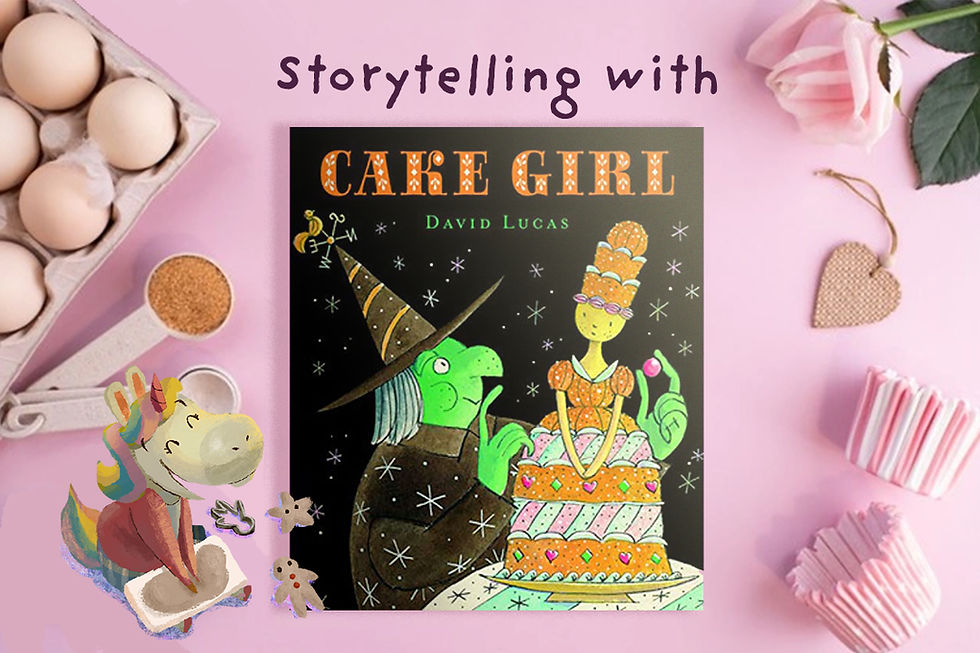Wordless Picture Books: The Guide for Children to Ace Literacy Skills Beyond Words
- Me Books Community
- Dec 16, 2019
- 4 min read
Updated: Mar 25, 2020

Like a bridge that connects two different parts of an area, words help two people with different views to engage in a conversation.
Ever since I learned how to speak, I have used words in my entire life to get my thoughts across to others. I have spent all fifteen of my academic years learning and memorising words for mini-tests and even major examinations. That shows how important words are to me.
However, having recently visited an art museum in the States, it sparked my curiosity about how a painter/artist/illustrator is able to convey messages through their wordless artworks? Their artworks left me speechless and in awe. I was confused when I was looking at the abstracts and wordless artworks, as I could easily understand the messages conveyed by the artists.
Thus, I began to ponder about the possibility of sending and sharing messages with others in wordless ways.
Having looked further on this topic, I found about wordless picture books. These books are often tailored to children’s reading. Being a university student who spends most of her time reading words from literature reviews and lecture notes, the exposure to wordless books makes me wonder whether it can be incorporated in education? Also, it ignites my curiosity to know whether it brings any benefits to the readers, in particular, young children?
As I looked further into this topic, I found that the benefits of providing wordless picture books to children are limitless. Here are three main benefits of it:
1. Foster creativity and imagination
With the soon-to-arrive Fourth Industrial Revolution, the job’s competencies are changing. One of the most valued competencies is creativity. It is essential to foster creativity at an early age.
As found in empirical research,
Early childhood is the enlightenment period for creativity
Creativity and Imagination can be gained from direct or indirect experiences and wordless picture books offer the experience for children to enhance their creativity. Wordless Picture books use pictures as the main media to carry messages. These pictures will be interpreted by children’s imagination and creativity to form a storyline. Subsequently, the storyline will be delivered through the children’s own words.

For example, in the above books entitled “Flora and the Flamingo” by Molly Idle, children can come up with their own story based on the pictures. The storyline will differ across different children, as they will have different views and ideas of the pictures. It will be very fascinating for parents or educators to do storytelling with their children or students, as they will be offered with different perspectives of the same story.
2. Sparks children’s observation and thinking skills
With wordless picture books, children are not restricted to telling stories based on texts; they can go above and beyond in their storytelling. As found in previous research, children operated a sense of vision as well as their thinking skills when they look at the pictures or illustrations. This is because they will think about the meanings of its and the relation of one object to another. This will prompt them to think critically and lead them to form an understanding of the meanings of the pictures. These thoughts and understanding will then be transformed into a storyline.
Also, some of the wordless picture books can include abstract concepts. ‘Roads’ by Yusof Gajah is a book about the character’s journey to a bus stand. The abstract drawings included in this book raises questions like ‘What if?’ and ‘What would you do?’ in children’s minds. These questions will encourage them to think from a different perspective.

3. Expand vocabulary
Parents or educators can use objects or actions included in the book to introduce new words. For example, after your child or students have completed their storytelling, you could ask questions about the storyline of their stories. You could pick out a few objects or actions that they have missed out and explain how they could have included the objects or actions. Perhaps, they have excluded those objects because they have insufficient knowledge about them.
Empirical research found that parents who use wordless picture books to tell a story to their children use more complex words and sentences. This provides the opportunity for the child to learn new words.
Thus, when you do storytelling to your children with wordless picture books, make sure to describe the pictures with detailed words. It will help to introduce them to new words.

Also, the children are able to learn about synonyms. For example, when your child says, “The girl breaks the window”, you could change the word ‘breaks’ to ‘damage’ (“The girl damages the window”). By doing this, your children will be able to understand the concept of synonym.
Having listed the benefits of wordless picture books, I have learned that it is possible to incorporate wordless picture books in education. It offers limitless benefits, especially for early childhood development. These benefits imply that messages are not necessarily need to be delivered through words. There are other mediums that can be used for this purpose. For example, pictures and illustrations provide an abundance of meanings and stories. It is up to the viewer’s interpretations to form a storyline out of it.

Click here to download our Me Books Plus App: https://apple.co/2S3iKzk (iOS) or http://bit.ly/2S7TFmY (Android).




Comments